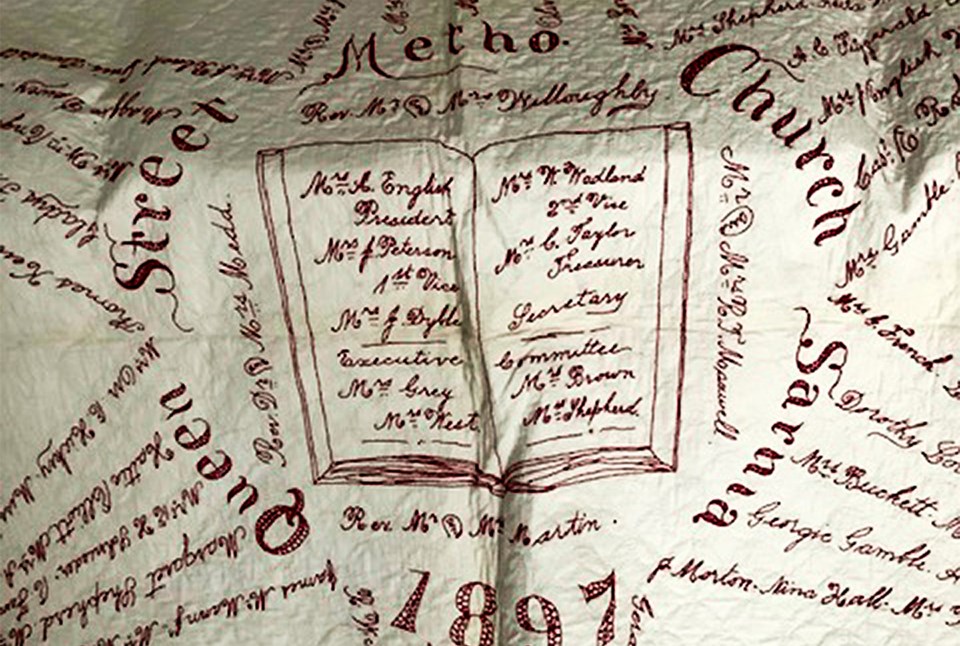 One thin dime.
One thin dime.
That’s what the ladies of Queen Street Methodist Church charged local residents to have their names embroidered on the queen-sized quilt in 1897.
The stunning result emerged recently from a cedar chest at the home of Sarnia’s Pat Clarke, who is turning over to the Sarnia Historical Society.
“It’s time to share it with the public again,” said Clarke, who inherited the 123-year-old quilt from her mother, Mary Lucas. She, in turn, received it from her aunt Alice Dyble, long known in United Church circles as “the keeper of the quilt.”
As many as six women simultaneously sewed and stitched the quilt under the direction of Alice Dyble. Later, the cornerstone of Devine Street Methodist Church celebrated her remarkable contributions.
Covered in intricate designs made by linking hundreds of old 19th century Sarnia names, the quilt was last publicly viewed in 1979 during a quilt show at the Sarnia Public Library Art Gallery.
The recently sold Central United Church was the original Methodist structure in Sarnia in 1882, growing out of the 1832 Wesleyan Mission at Christina and Devine streets.
A mission church followed at Parker Street in 1873.
Two years later the Methodists created a second mission in the city’s South Ward. In 1881, Queen Street Methodist Church went up on Lot 12 at the corner of Queen and Devine Streets.
In 1900, the congregation moved to the new Devine Street Methodist Church built on the southwest corner of Devine and John Streets.
The Queen Street Quilt was a fundraiser used to help pay for the new church.
Sarnia, at the time, was struggling to reach the population of 10,000 needed for city status. According to Lovell’s 1906 Canada Gazetteer, Devine Street Methodist was one of eleven churches in the town of 9,023.
Gutted by fire in July of 1914, the old wood frame building was razed and rebuilt.
The second structure, known after 1925 as Devine Street United Church, was designed by Sarnia-born architect Robert William Fawcett in the Romanesque Revival style.
From the 1940s through the mid-1960s its congregation averaged 600 worshippers for Sunday services, with as many as 1,000 children attending Sunday school.
But eventually the church was deemed unsafe and demolished in 1983.





